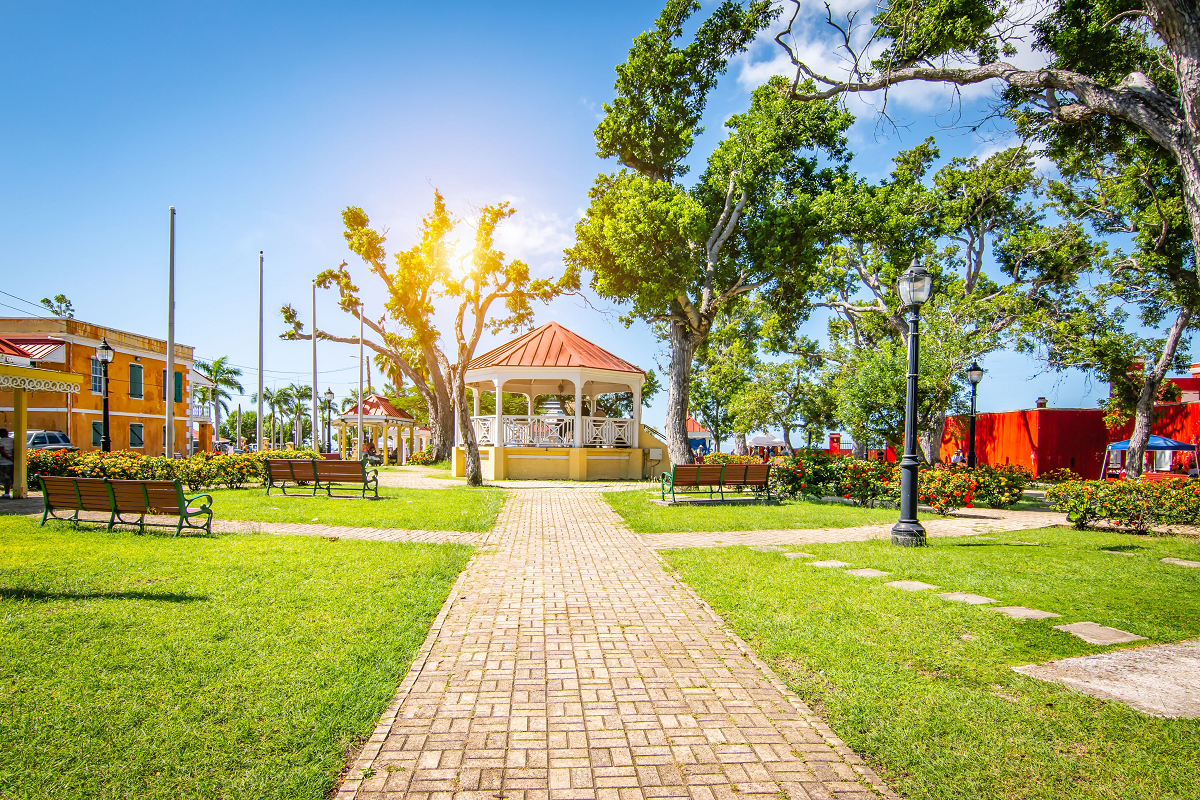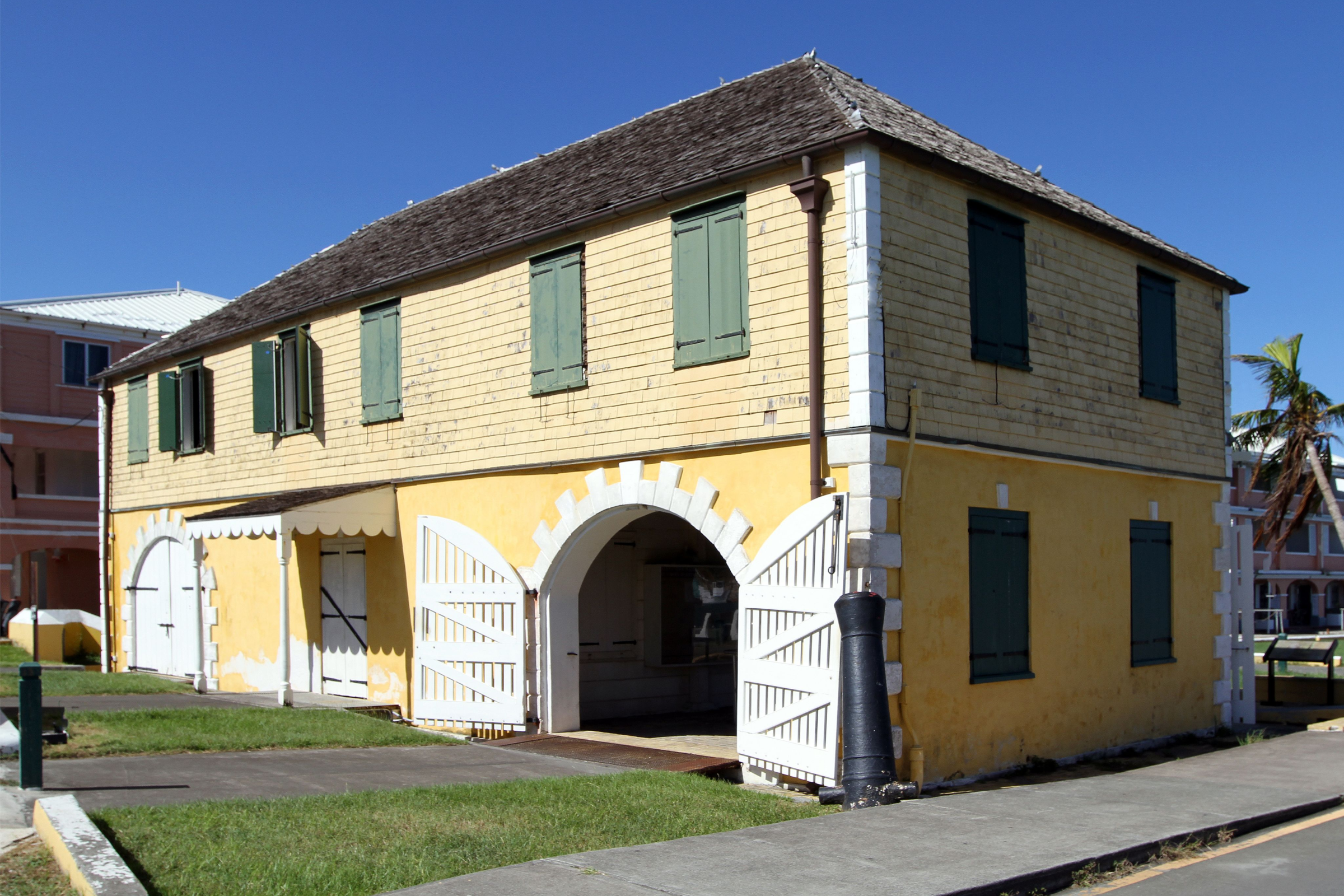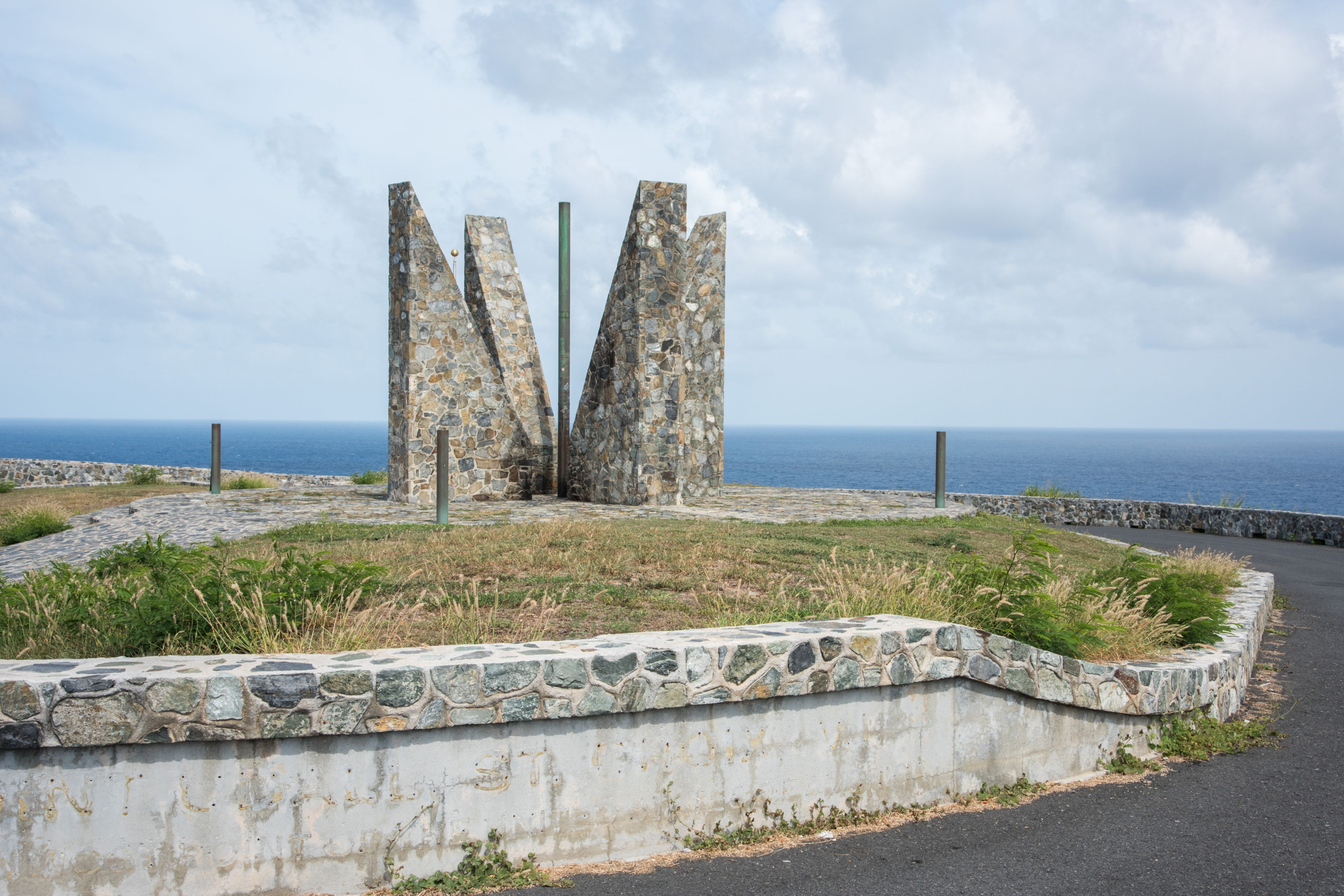Weather
The US Virgin Islands enjoy a subtropical climate that is significantly tempered by the easterly trade winds that often blow. The average yearly temperature is around 27.6oC (82oF), with the hottest period being between May and October when the temperatures can go as high as 32oC (90oF). Also expect relatively low humidity with little seasonal temperature variation, though. As for the rainy and hurricane season, it starts in September and lasts until November.
Interesting Facts About the US Virgin Islands
- English is the official language in the USVI, followed by Spanish or Spanish Creole and French or French Creole.
- The majority of USVI residents are Protestants (around 60%), with Roman Catholics and Christians making up around 30% of the other religions.
- The United States of America paid $25 million in gold to purchase the US Virgin Islands which were known at the time as the Danish West Indies. The negotiations lasted 50 years, though, before the nation finally became a US territory in 1917.
- The strategic position of the US Virgin Islands drew the attention of the US, who decided to scoop the territory up out of fear that Germany might get a hold of it first.
- Several European rulers had occupancy of St. Croix, St. Thomas, and St. John islands for centuries, including the Knights of Malta, France, Britain, Spain, Holland, and Denmark.
- Tiny Water Island (just off the south St. Thomas coast) is the newest addition to the USVI. At first, the 492-acre island was under private ownership. In 1944, the USA purchased it for $10,000, and two years later, it was transferred to local jurisdiction.
Original Names of Cities and Islands
Charlotte Amalie is the current capital of the US Virgin Islands and is located on St. Thomas. Back in 1666, though, the Danish-settled town was called Taphus, which means Tap House, for the many taverns that used to line its streets. However, the Danes changed the name to Charlotte Amalie to honour King Christian V’s spouse in the late 1600s.
During his second exploration of the New World, Columbus found St. Croix in November 1493 but was unable to explore the island as he wished because the indigenous tribe that lived there, the Caribs or Tainos, chased him off. So, he continued his journey to the north and surveyed St. John and St. Thomas islands. According to some accounts, he was mesmerised by their natural beauty and named them “Las Once Mil Virgenes” which was later shortened to “Las Virgenes”.
Water Island, the most recent addition to the USVI family, is named that way for its impressive collection of freshwater ponds. And, since it is the last island that joined the USVI, it is also playfully called “The Last Virgin”.
The Two USVI Capitals
Charlotte Amalie has not always been the capital of the islands that were then referred to as the Danish West Indies. In 1754, when the Danish crown took control of them, Christiansted became the official capital (also located on St. Croix island). Christiansted remained the capital for as long as the sugar and rum industries were thriving (with the use of slave labour). The abolishment of slavery, though, in 1848, resulted in a steep decline in production, which eventually made the crown move the capital back to Charlotte Amalie.
Quelbe – The Official USVI Music
To help preserve their storytelling traditions, the islanders developed a style of folk music that turns all items within a household into musical instruments. Also referred to as “scratch band music”, quelbe music players use anything from plywood to car mufflers to produce music. In reality, any item that can be “scratched off” can be a strong contestant! Quelbe became the official US Virgin Islands music in 2003 with the passing of a bill.
Popular Local Attractions and Must-See Landmarks
The Virgin Islands National Park is definitely worth a visit. It takes up more than 75% of St. John island (almost 5000 acres) and is home to thousands of plant species and rich wildlife. It is believed that the son of John D. Rockefeller bought the land in 1956 after being struck by the island’s natural beauty during a cruise around the Caribbean and turned it into a national park as a means to help preserve the natural environment that bedazzled him.
Other attractions that draw the attention of thousands of tourists annually are the many forts located across the islands, including the 1679-built cylindrical stone Blackbeard’s Castle (once called Skytsborg Tower or Sky Tower by the Danish who constructed it), which, by the way, seems to have never been used by the infamous pirate with the same name. However, the Virgin Islands were, indeed, a refuge for pirates in the late 17th century, after a St. Thomas governor offered safe harbour to pirates, asking for favourable trade in return! In any case, the castle is a scenic spot offering spectacular 360-degree views of the island.
If we had to pick only one more place to include in your travel itinerary, we would suggest Salt River Bay (aka bioluminescent bay) at St. Croix, which greets visitors with a rare phenomenon that lights up the water!
As a bonus, we also recommend a stop at St. Croix to admire the centuries-old Baobab tree that is believed to be the oldest in the Caribbean. Planted in the 18th century, it can live for thousands of years and reach up to 25 metres in height!
And, don’t forget to snorkel in the underwater National Park in Trunk Bay with the bustling marine life and fantastic aquatic scenery!
Exciting Facts About the USVI
- The second-oldest synagogue in the entire Western Hemisphere is in St. Thomas island and was built in 1833.
- St. John was the site where a slave rebellion was initiated in 1733 that led to slaves controlling the island for 6 months before French troops helped the Danish regain control of St. John.
- The day when the USVI became a US territory is commemorated with “Transfer Day”, an event that includes festivals, feasts with Danish-inspired Red Grout (a type of pudding made from tapioca and guavas), parades, and concerts.
- The USVI has been a popular shopping destination since the early 1600s.
- THE USVI is the only US territory that has coasts on both the Atlantic Ocean and the Caribbean Sea.
- Despite belonging to the USA, driving in the USVI is on the left-hand side of the road.
Weather
The US Virgin Islands enjoy a subtropical climate that is significantly tempered by the easterly trade winds that often blow. The average yearly temperature is around 27.6oC (82oF), with the hottest period being between May and October when the temperatures can go as high as 32oC (90oF). Also expect relatively low humidity with little seasonal temperature variation, though. As for the rainy and hurricane season, it starts in September and lasts until November.
Interesting Facts About the US Virgin Islands
- English is the official language in the USVI, followed by Spanish or Spanish Creole and French or French Creole.
- The majority of USVI residents are Protestants (around 60%), with Roman Catholics and Christians making up around 30% of the other religions.
- The United States of America paid $25 million in gold to purchase the US Virgin Islands which were known at the time as the Danish West Indies. The negotiations lasted 50 years, though, before the nation finally became a US territory in 1917.
- The strategic position of the US Virgin Islands drew the attention of the US, who decided to scoop the territory up out of fear that Germany might get a hold of it first.
- Several European rulers had occupancy of St. Croix, St. Thomas, and St. John islands for centuries, including the Knights of Malta, France, Britain, Spain, Holland, and Denmark.
- Tiny Water Island (just off the south St. Thomas coast) is the newest addition to the USVI. At first, the 492-acre island was under private ownership. In 1944, the USA purchased it for $10,000, and two years later, it was transferred to local jurisdiction.
Original Names of Cities and Islands
Charlotte Amalie is the current capital of the US Virgin Islands and is located on St. Thomas. Back in 1666, though, the Danish-settled town was called Taphus, which means Tap House, for the many taverns that used to line its streets. However, the Danes changed the name to Charlotte Amalie to honour King Christian V’s spouse in the late 1600s.
During his second exploration of the New World, Columbus found St. Croix in November 1493 but was unable to explore the island as he wished because the indigenous tribe that lived there, the Caribs or Tainos, chased him off. So, he continued his journey to the north and surveyed St. John and St. Thomas islands. According to some accounts, he was mesmerised by their natural beauty and named them “Las Once Mil Virgenes” which was later shortened to “Las Virgenes”.
Water Island, the most recent addition to the USVI family, is named that way for its impressive collection of freshwater ponds. And, since it is the last island that joined the USVI, it is also playfully called “The Last Virgin”.
The Two USVI Capitals
Charlotte Amalie has not always been the capital of the islands that were then referred to as the Danish West Indies. In 1754, when the Danish crown took control of them, Christiansted became the official capital (also located on St. Croix island). Christiansted remained the capital for as long as the sugar and rum industries were thriving (with the use of slave labour). The abolishment of slavery, though, in 1848, resulted in a steep decline in production, which eventually made the crown move the capital back to Charlotte Amalie.
Quelbe – The Official USVI Music
To help preserve their storytelling traditions, the islanders developed a style of folk music that turns all items within a household into musical instruments. Also referred to as “scratch band music”, quelbe music players use anything from plywood to car mufflers to produce music. In reality, any item that can be “scratched off” can be a strong contestant! Quelbe became the official US Virgin Islands music in 2003 with the passing of a bill.
Popular Local Attractions and Must-See Landmarks
The Virgin Islands National Park is definitely worth a visit. It takes up more than 75% of St. John island (almost 5000 acres) and is home to thousands of plant species and rich wildlife. It is believed that the son of John D. Rockefeller bought the land in 1956 after being struck by the island’s natural beauty during a cruise around the Caribbean and turned it into a national park as a means to help preserve the natural environment that bedazzled him.
Other attractions that draw the attention of thousands of tourists annually are the many forts located across the islands, including the 1679-built cylindrical stone Blackbeard’s Castle (once called Skytsborg Tower or Sky Tower by the Danish who constructed it), which, by the way, seems to have never been used by the infamous pirate with the same name. However, the Virgin Islands were, indeed, a refuge for pirates in the late 17th century, after a St. Thomas governor offered safe harbour to pirates, asking for favourable trade in return! In any case, the castle is a scenic spot offering spectacular 360-degree views of the island.
If we had to pick only one more place to include in your travel itinerary, we would suggest Salt River Bay (aka bioluminescent bay) at St. Croix, which greets visitors with a rare phenomenon that lights up the water!
As a bonus, we also recommend a stop at St. Croix to admire the centuries-old Baobab tree that is believed to be the oldest in the Caribbean. Planted in the 18th century, it can live for thousands of years and reach up to 25 metres in height!
And, don’t forget to snorkel in the underwater National Park in Trunk Bay with the bustling marine life and fantastic aquatic scenery!
Exciting Facts About the USVI
- The second-oldest synagogue in the entire Western Hemisphere is in St. Thomas island and was built in 1833.
- St. John was the site where a slave rebellion was initiated in 1733 that led to slaves controlling the island for 6 months before French troops helped the Danish regain control of St. John.
- The day when the USVI became a US territory is commemorated with “Transfer Day”, an event that includes festivals, feasts with Danish-inspired Red Grout (a type of pudding made from tapioca and guavas), parades, and concerts.
- The USVI has been a popular shopping destination since the early 1600s.
- THE USVI is the only US territory that has coasts on both the Atlantic Ocean and the Caribbean Sea.
- Despite belonging to the USA, driving in the USVI is on the left-hand side of the road.









